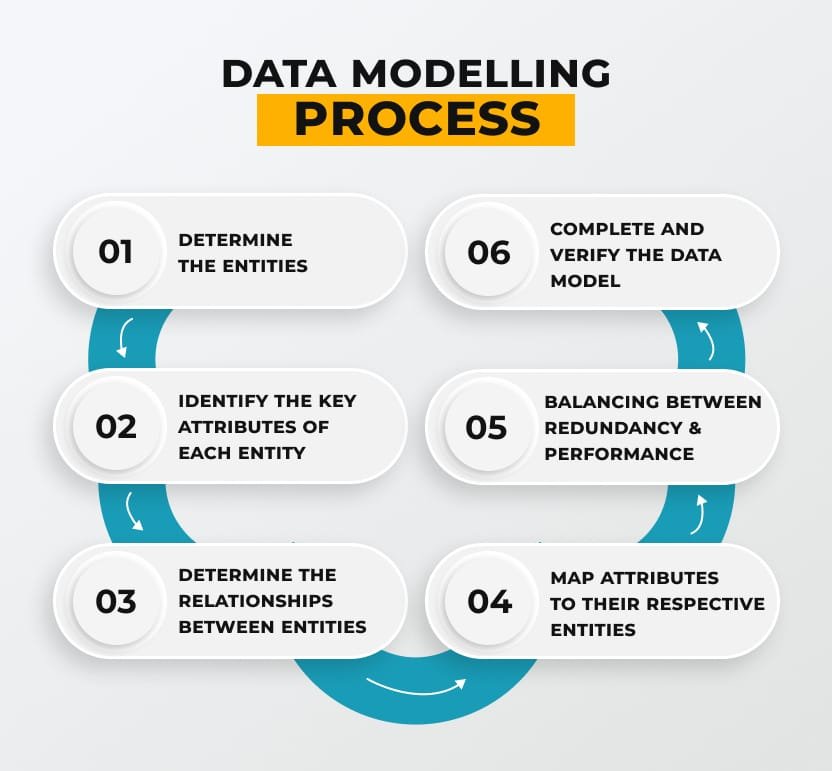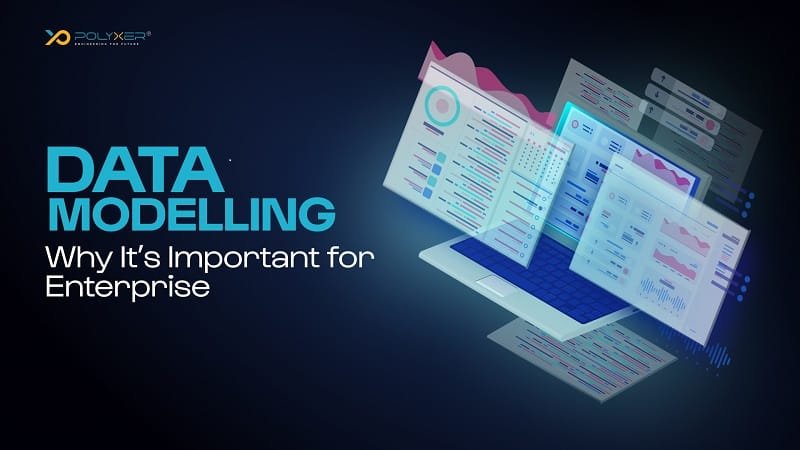
Zeroing On Business Problems: The Most Important Tenet

Future Proof Big Data Architecture: A Comprehensive Guide
In today's data-driven world, enterprises are drowning in a sea of information. But are they truly harnessing the power of their data? Many organizations struggle to make sense of the vast amounts of data they collect which leads to missed opportunities and inefficient decision-making. This is where data modelling comes into play – crucial yet often overlooked aspect of enterprise data management.
Imagine having a crystal-clear roadmap of your organization's data landscape, where every piece of information fits perfectly like a jigsaw puzzle. That's the magic of data modelling! It's not just about organizing data; it's about unlocking its true potential to drive business growth and innovation. But why is data modelling so critical for enterprises, and how can it transform the way you do business?
Further, we'll dive deep into the world of data modelling and explore its significance for enterprises. We'll uncover the benefits it brings, its role in enterprise architecture, and how to overcome common challenges. By the end, you'll understand why data modelling is not just a technical exercise, but a strategy imperative for any forward-thinking organization. Let's embark on this data-driven journey together!
Understanding Data Modelling
B. Types of data models (Conceptual, Logical, Physical)
Conceptual

Conceptual Data Modelling
Logical

Logical Data Modelling
Physical

Physical Data Modelling
Key components of data modelling
Entities are the fundamental building blocks of data modelling. They represent distinct objects or concepts within a system, such as customers, products, or orders. Each entity has specific attributes that describe its characteristics.
Attributes
Attributes are the properties or characteristics that define an entity. For example, a customer entity might have attributes like name, email, and address. Attributes can be of various data types, including:
• Text
• Numeric
• Date/Time
• Boolean
Relationships
Relationships define how different entities interact with each other. They are crucial for establishing connections between data points.
Constraints
Constraints are rules that maintain data integrity and consistency. They include:
• Primary keys: Unique identifiers for each entity instance
• Foreign keys: Fields that reference primary keys in other entities
• Unique constraints: Ensure that certain attribute values are unique across all instances
• Check constraints: Validate data based on specific conditions Understanding these key components is essential for creating effective data models that accurately represent complex business systems and support informed decision-making processes.
Data Modelling Techniques

Data Modelling Techniques
Hierarchical data modelling organizes data in a tree-like structure, with parent-child relationships. This technique is particularly useful for representing organizational structures or file systems.
Key Features:
• One-to-many relationships
• Single root element
• Efficient for certain types of queries
B. Relational Data Modelling
Relational data modelling is the most widely used technique, organizing data into tables with rows and columns. It's highly flexible and supports complex relationships between data entities.
Advantages:
• Supports ACID properties
C. Network Data Modelling
Network data modelling extends the hierarchical model by allowing many-to-many relationships. This technique is useful for complex systems with interconnected data points.
D. Entity Relationship Data Modelling
Entity Relationship (ER) modelling focuses on the relationships between entities in a system. It's often used as a precursor to implement a relational database.
E. Dimensional Data Modelling
Dimensional modelling is optimized for data warehousing and business intelligence applications. It organizes data into facts and dimensions, facilitating quick analysis and reporting.
F. Object Oriented Data Modelling
This technique aligns with object-oriented programming principles, representing data as objects with attributes and methods. It's particularly useful for complex systems with inheritance and encapsulation.
G. Graph Data Modelling
Graph data modelling excels at representing highly interconnected data. It's ideal for social networks, recommendation systems, and other scenarios where relationships between entities are crucial.
Each of these techniques has its strengths and is suited to different types of data and business requirements. The choice of modelling technique can significantly impact system performance, scalability, and ease of use.
Process of Data Modelling

Data Modelling Process
A. Determine the Entities
The first step in data modelling is to identify the key entities within your enterprise's data ecosystem. Entities represent distinct objects or concepts that are crucial to your business operations. These could include customers, products, orders, or employees.
B. Identify the Key Attributes of Each Entity
Once entities are determined, the next step is to define their attributes. Attributes are specific pieces of information that describe each entity.
• One-to-One
• One-to-Many
• Many-to-Many
For instance, a customer can have many orders (One-to-Many), while an order can contain multiple products (Many-to-Many).
D. Map Attributes to Their Respective Entities
After defining relationships, it's crucial to ensure that each attribute is correctly associated with its corresponding entity. This step helps in maintaining data integrity and avoiding redundancy.
E. Normalize: Balancing Between Redundancy & Performance
Normalization is the process of organizing data to minimize redundancy. However, it's essential to strike a balance between reducing redundancy and maintaining query performance. This often involves:
1. Eliminating repeating groups
2. Removing partial dependencies
3. Removing transitive dependencies
F. Complete and Verify the Data Model
The final step involves reviewing and validating the data model. This includes:
• Ensuring all entities, attributes, and relationships are accurately represented
• Verifying that the model meets business requirements
• Testing the model with sample data to confirm its functionality.
Benefits of Data Modelling for Enterprises
• Clear data relationships
• Efficient data storage
• Simplified data retrieval
Enhanced data quality and consistency
By establishing a standardized data model, enterprises ensure:
• Uniform data representation
• Reduced data errors
• Consistent data interpretation across departments
This consistency leads to more reliable insights and streamlined operations.
Data Modelling in Enterprise Landscape
A. Aligning data models with business goals
Data models in enterprise architecture must align with business objectives to drive value. This alignment ensures:
• Improved decision-making
• Enhanced operational efficiency
• Better resource allocation
Integration with existing systems
Seamless integration of data models with current systems is crucial for enterprise success. It minimizes disruption and maximizes the utility of existing infrastructure.
Overcoming Data Modelling Challenges
Handling complex data relationships
Complex data relationships can be tackled by:
• Utilizing advanced modeling techniques
• Implementing hierarchical structures
• Employing graph databases
Managing data model changes
Effective change management involves:
• Implementing version control systems
• Conducting impact assessments
• Establishing clear communication channels
These strategies ensure smooth transitions and minimize disruptions to existing systems and processes.
Measuring the Impact of Data Modelling
Key performance indicators
Data modelling's impact can be measured through various KPIs:
• Data quality improvement
• Time saved in data retrieval
• Reduction in data redundancy
• Increased data consistency
ROI assessment
1. Implementation costs
4. Improved decision-making outcomes
Conclusion
As enterprises continue to evolve in the digital age, embracing data modelling becomes increasingly crucial. By investing in proper data modelling practices, businesses can overcome challenges, measure their impact, and integrate these models seamlessly into their enterprise architecture. Ultimately, data modelling is not just a technical exercise but a strategic initiative that can drive innovation, enhance customer experiences, and propel businesses towards long-term success in an ever-changing market landscape.
This Article is also here






